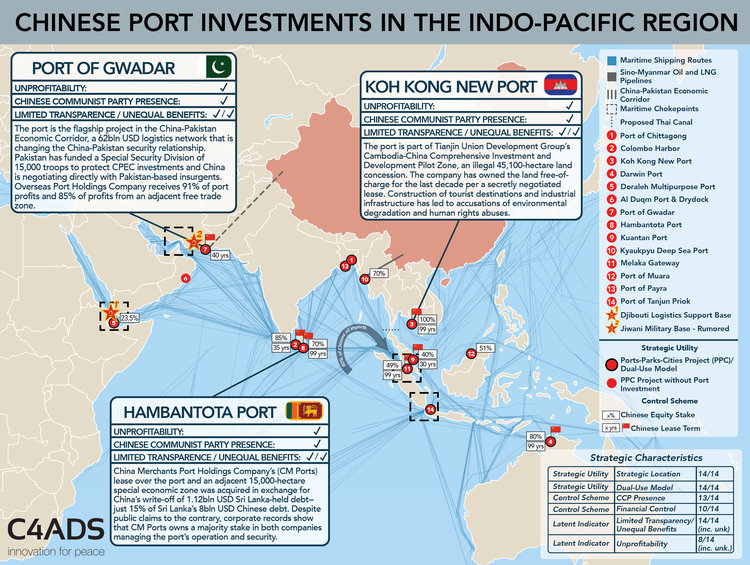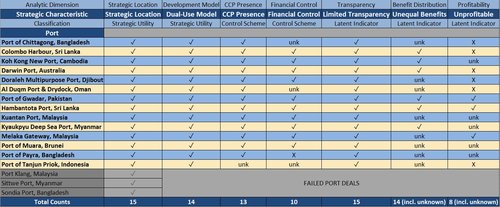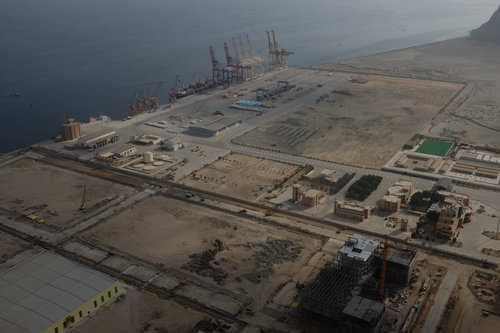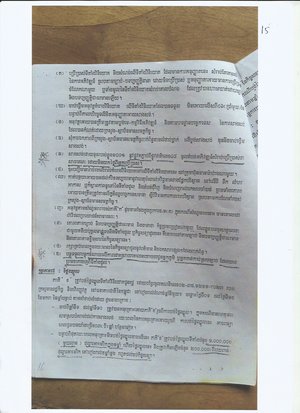Over the last decade, China has significantly increased its global investments, particularly in international and maritime infrastructure. Chinese firms have pledged billions of dollars to develop maritime ports and related projects across the Indo-Pacific Region since China announced its strategy to increase global trade connectivity through the Belt and Road Initiative (BRI). The BRI, China’s guiding foreign policy doctrine and one of the most ambitious economic initiatives in modern history, is portrayed by Chinese leaders as creating win-win economic development for all nations. Yet, some states question whether China’s infrastructure investments are driven by strategic interests.“Wherever there is Chinese business, warships will have a transportation support point.” —Deng Xianwu (邓先武), commanding officer of the PLAN warship Changbaishan (长白山) (2016)
This report evaluates China’s maritime infrastructure investment goals in the Indo-Pacific within the context of both policy from official documents and analyses from state- and Communist Party-affiliated publications. The authors find that Chinese analysts unofficially discussing port investments routinely prioritize China’s national security interests over the objective of mutually beneficial economic development, contradicting the position of official policy documents. Chinese analysts argue that the BRI’s Maritime Silk Road component can help ensure Beijing’s access to vital shipping lanes. Port investments are viewed as vehicles with which China can cultivate political influence to constrain recipient countries and build dual-use infrastructure to facilitate Beijing’s long-range naval operations. In some cases, analysts explicitly propose using international assistance and development as a pretext for pursuing China’s geopolitical objectives.

“If China does not assume this role, outside powers will intervene and offer these public goods, engendering a negative impact on China” —Analysts, Communist Party of China International Department (2017)
This report also analyzes a sample of 15 China-funded port projects to assess the behavior of the Chinese state and the Chinese companies involved using open-source data and, in some cases, on-the-ground investigation. The characteristics of China-funded commercial ports throughout the Indo-Pacific and the behavior of Chinese companies indicate that these investments are not principally driven by the concept of win-win development as Beijing claims. Rather, the investments appear to generate political influence, stealthily expand China’s military presence, and create an advantageous strategic environment in the region. These strategic characteristics and behaviors fall along dimensions that, together, constitute a useful analytical framework through which to assess Chinese infrastructure investments globally.
The framework consists of the following six dimensions along which fall strategic characteristics:

Table of 15 Chinese IOR Port Projects Evaluated According to the Framework. Click to expand.
Finally, this framework is applied to three case studies that more fully explore the actors, events, and agreements surrounding key and understudied BRI projects. In part, this analysis draws on documents never before released to the public. The selection of cases was based on geographic diversity, the project’s relative salience in BRI discussions, and the amount of existing literature.
The BRI has visibly changed the strategic relationship between China and Pakistan. Increasing investments necessitate greater security for Chinese projects like the Port of Gwadar, which burdens both Beijing and Islamabad with growing concomitant costs.

China-funded vanity projects have demonstrably constricted Sri Lankan sovereignty. Unprofitable, debt-heavy projects like Hambantota Port give China enduring leverage over Colombo’s foreign policy—leverage that Beijing has used to its benefit.

In an apparent violation of Cambodian law, corporate obfuscation helped China broker a deal with Phnom Penh for 20% of Cambodia’s coastline. Consequences of the Koh Kong mega-development include economic losses, environmental degradation, and reported human rights abuses.



No comments:
Post a Comment